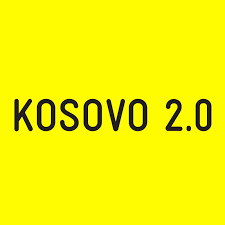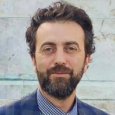In 2022, the World Economic Forum published an article highlighting some of the most pressing environmental and social challenges facing the U.S. and Europe. The article posed several crucial questions: What is the second-largest and fastest-growing source of climate pollution in Europe? What is the leading cause of child deaths in the U.S. and Europe? What is the main contributor to noise pollution, which raises stress levels and increases the air pollution that shortens lives in European cities? And what is one of the key forces widening the gap between rich and poor in urban areas? The answer to all of these questions was the same — and surprisingly simple — the vehicles on our roads, especially personal passenger cars.
The choice of personal cars as the primary mode of urban mobility poses a serious threat to public health and citizens’ well-being. One of the most significant concerns is the high number of road accidents, which often result in loss of life. According to a 2018 report by the World Health Organization (WHO), 1.35 million people died in road accidents worldwide in 2016.
In Kosovo, the situation is particularly alarming. In 2022 and 2023, the Kosovo Police reported 106 deaths from traffic accidents each year. The total number of accidents rose significantly, from 20,792 in 2022 to 23,676 in 2023. After a slight downward trend in fatalities from 2010 to 2019, the numbers began to rise. From 2010 to 2019, however, the overall toll still remained grim — a total of 1,317 people lost their lives and 103,688 were injured in road accidents. One aspect that warrants further investigation is the apparent link between this negative trend and the steady increase in the number of cars in Kosovo, over the years. According to the Kosovo Agency of Statistics, there were 411,372 registered cars in 2024.
In addition to the direct threat to human life, cars are among the leading contributors to air pollution, particularly in urban areas. According to the WHO, polluted air causes approximately 4.2 million deaths globally each year. In Kosovo, high levels of air pollution are largely the result of carbon emissions and other pollutants, with the transport sector ranking as the second-largest source of pollution. The primary source of pollution comes from electricity production, which is used for heating and cooling residential spaces.
In Prishtina, vehicles as the primary mode of transportation are becoming especially problematic given that the city often seems to serve cars more than its citizens. Change is inevitable. We must all begin to rethink how and why we move through the city, in order to overcome car dependency and give Prishtina a chance to breathe. At the same time, decision-makers at both local and central levels in Kosovo must step up and implement concrete measures to support the transition toward more sustainable forms of mobility.
Toward a new mobility system
Continuing with existing city and state policies, which encourage car dependency and uphold car dominance in urban spaces, is a path destined to fail. The public must commit to allocating funds, mobilizing necessary resources and reimagining the use of public space to enable a transition toward a new, more sustainable urban mobility system.
In some cases, solutions arise from areas far beyond traditional transport management practices. A striking example comes from the U.K. in the 1990s, when the removal of withdrawal fees from ATMs indirectly helped reduce car trips. Banks collectively agreed that withdrawal fees for customers using another bank’s ATM would be charged by the bank, allowing people to use any ATM without incurring withdrawal fees. This seemingly minor change reduced the need for residents to drive in search of their own bank’s ATM.
In this spirit, changing the way we move from point A to point B — whether it involves people or goods — has become inevitable. Put simply, urban mobility means shifting the focus from how cars move to how people move.
A mobility shift refers to the transformation of how people and goods move within cities, by embracing more sustainable and efficient alternatives. This transition involves creating conditions that prioritize walking and cycling as primary modes of transport, not just as recreational activities, but also improving and expanding public transportation, adapting urban infrastructure, promoting the use of electric vehicles and curbing uncontrolled urban sprawl through spatial planning intended to shorten travel distances.
Changes are not always financially burdensome, but they do require a fundamental shift in how we experience the city and its public spaces.
Given the multidimensional nature of transport — encompassing the complex interplay between urban planning, the environment and economic development — the transition away from a dependence on personal cars presents a major challenge. However, experiences from developed countries show that such a transition is achievable through an approach known as the Avoid-Shift-Improve approach:
• Avoid and reduce the need for car travel, through better urban planning and more rational land use.
• Shift to more sustainable modes by promoting walking, cycling and the use of public transport.
• Improve transport modes through technological innovation and the adoption of cleaner alternatives such as electric vehicles.
In other words, to enable a successful transition in urban mobility — and to improve air quality and transport safety — cities must undergo radical transformation. These changes are not always financially burdensome, but they do require a fundamental shift in how we experience the city and its public spaces.
Currently, most urban travel in Prishtina is conducted by personal cars. The goal is to replace a portion of these trips with more sustainable alternatives: some with walking or cycling, others with public transportation and some trips should be avoided altogether. At the same time, information technology should be integrated to increase the efficiency of transport networks.
Creating cities that prioritize people over cars demands a radical rethinking of how we organize and allocate public space.
A diet for the streets
Prioritizing the allocation of public space for sidewalks and safe pedestrian movement must be a central goal. Current practices in Prishtina — and other cities — where sidewalks are used as temporary (or even permanent) parking spots, extensions of businesses or for other purposes, should be completely abandoned. Our cities, which still retain sizes and structures conducive to walking, should be recognized and developed accordingly to support pedestrian-friendly environments.
In parallel, the development of safe infrastructure for cycling as a daily mode of transport should complement pedestrian infrastructure — ensuring that these two sustainable modes do not compete for space. Any improvements in favor of pedestrians, cyclists or public transport should, when necessary, reclaim space currently allocated to personal cars.
An inspiring example is found in Paris, where the streets are undergoing a radical transformation. Paris aims to reduce noise and air pollution by limiting the space for cars and increasing infrastructure for walking and cycling. The city’s ambitious plan, launched in 2021, aims to make 100% of its streets accessible for walking and cycling by 2026.
Along with investments in the metro and train systems, Paris aims to become a 15-Minute city, meaning that all the necessities of daily life are accessible to people within a 15-minute journey achieved by means other than a personal car. The goal is for education, work, leisure, culture, sports and daily shopping to be accessible, for example by bicycle, within an acceptable distance and time.
The goal of these interventions is to reclaim public space for people — for pedestrians, cyclists and the community at large.
One of the most important steps toward creating safer and more sustainable cities is implementing what is known as a road diet — a comprehensive approach aimed at reducing the dominance of cars in urban spaces. This involves a range of interrelated measures, such as traffic calming, increasing parking fees, limiting parking capacity, reducing speed limits in residential areas and, in some cases, completely banning cars from certain zones. The goal of these interventions is to reclaim public space for people — for pedestrians, cyclists and the community at large.
A key component of this approach is traffic calming — a set of physical interventions designed to reduce vehicle speeds and increase safety for pedestrians and cyclists. These measures typically include speed limits, raised pedestrian crossings, lane narrowing and the construction of roundabouts. By discouraging fast or aggressive driving and enforcing slower speeds, they help create safer and more livable urban environments.
The example of Brussels, Belgium, illustrates how such a transformation can be successfully implemented. Since January 1, 2021, the city has adopted the “City 30” policy, designating most roads with a speed limit of 30 kilometers per hour, except for main roads where the limit remains 50 or 70 kilometers per hour. This measure aims to enhance safety for all road users.
Similarly, lowering speed limits — especially in residential areas, urban centers and around public facilities such as schools — helps prevent accidents and creates safer environments for all road users. Reduced speed limits also contribute to quieter streets, making roads more welcoming for pedestrians and cyclists while helping to decrease noise pollution.
Another key component of the road diet is parking policy. Introducing parking charges helps manage demand and encourages citizens to consider alternatives to private car use. Dynamic pricing — where fees vary based on time and demand, particularly in congested areas — can discourage frequent car trips. Additionally, limiting the availability of parking spaces, especially in high-density areas, not only reduces reliance on private vehicles but also promotes the use of public transport, cycling and walking.
In this regard, Amsterdam, in the Netherlands, has taken bold measures. In 2018, the city introduced a mobility plan aimed at reducing the total number of cars, prioritizing pedestrians, bicycles and public transport. As part of this plan, parking fees were increased by 65% in 2019. Today, the average parking fee in Amsterdam is 4.22 euros per hour, rising to 7.50 euros in the city center. A 2022 study shows that Amsterdam has successfully reduced traffic in the city center and encouraged the use of alternative modes of transport.
Another important measure within this approach is the creation of car-free zones, typically implemented in historic centers, cultural heritage areas or locations with high pedestrian traffic.
In Bologna, Italy, the first attempt to limit traffic took place between 1972 and 1982, resulting in a 17% reduction in vehicle traffic within the old city. A key element of this success was the improvement of the public transport system — including bus lanes, mini buses and trolley buses — not only in the historic center but also along major roads throughout the city. The traffic-restricted zone, which encompasses the entire old city, was made permanent in July 1989. Vehicle access is restricted between 7 a.m. and 8 p.m., although a large number of exemptions apply. Bologna is not an isolated case; over 40 cities across Italy have introduced similar restricted traffic zones.
Meanwhile, Birmingham, in the U.K., implemented the Clean Air Zone initiative in the city center to improve air quality and reduce pollution from high-emission vehicles. This initiative is part of the city’s broader urban mobility strategy, which aims to discourage the use of polluting vehicles by imposing charges on the most harmful ones, while promoting walking, cycling and public transport. A key outcome of the Clean Air Zone has been its environmental impact, with a reported 13% reduction in nitrogen dioxide levels during the first seven months of implementation.
Accessible public transport for everyone is a key pillar in the transformation toward healthier and safer cities.
Another effective way to reduce pollution, noise and overcrowding in sensitive areas is to restrict car access during peak hours. The “School Streets for Safe and Sustainable School Trips” project was implemented in the German state of Baden-Württemberg. The daily transport of students to school contributes significantly to traffic congestion during peak hours, as many parents drop their children off as close to the school entrance as possible. This practice worsens road safety, increases air pollution and negatively affects children’s well-being. A widely adopted solution is creating “school routes,” where motor vehicle access around schools is restricted during student arrival and departure times. Since the 2010s, cities in Austria, Belgium, France, Germany and Italy have implemented this approach, with significant expansion following the COVID-19 pandemic.
Alongside all these interventions, accessible public transport for everyone is a key pillar in the transformation toward healthier and safer cities. Investments in modern, inclusive transport systems can encourage citizens to move away from car dependency and adopt public transport as a primary mode of travel. These investments include frequent and reliable service, real-time information, digital payment options and user-friendly applications.
An inspiring example is Luxembourg, which has offered free public transport to both residents and visitors since 2020, covering buses, trains and trams. As a result, this policy has led to a 12-18% increase in ridership on certain bus and train lines. This demonstrates that improving accessibility and removing economic barriers can have an immediate impact on a citizen’s travel behavior.
Moreover, these interventions clearly demonstrate that the right policies can influence and change a citizen’s mobility habits, making it possible to move away from relying on personal cars as the primary means of transportation.
Cities can be reimagined as spaces for people — not cars.
While all the measures discussed in reducing car traffic by promoting alternative modes of transport have proven effective, it’s important to recognize that there is no one-size-fits-all solution. Not all of these policies may be suitable for Prishtina or other cities in the country. Each urban context requires tailored solutions based on local conditions. Decision-makers and the public must work together to evaluate, experiment with and test different interventions in order to identify the most effective approaches.
Designing sustainable mobility policies requires a detailed analysis of car travel patterns — understanding the reasons for trips, their origins and destinations and exploring ways to subsidize the shift to cleaner, more efficient alternatives.
The transition to sustainable mobility demands an integrated approach, which combines infrastructure transformation, behavioral change and supportive policies. By prioritizing walking, cycling, public transport and thoughtful urban planning, cities can be reimagined as spaces for people — not cars.
It’s time to breathe again.
Feature Image: K2.0
 Want to support our journalism? Become a member of HIVE or consider making a donation. Learn more here.
Want to support our journalism? Become a member of HIVE or consider making a donation. Learn more here.

